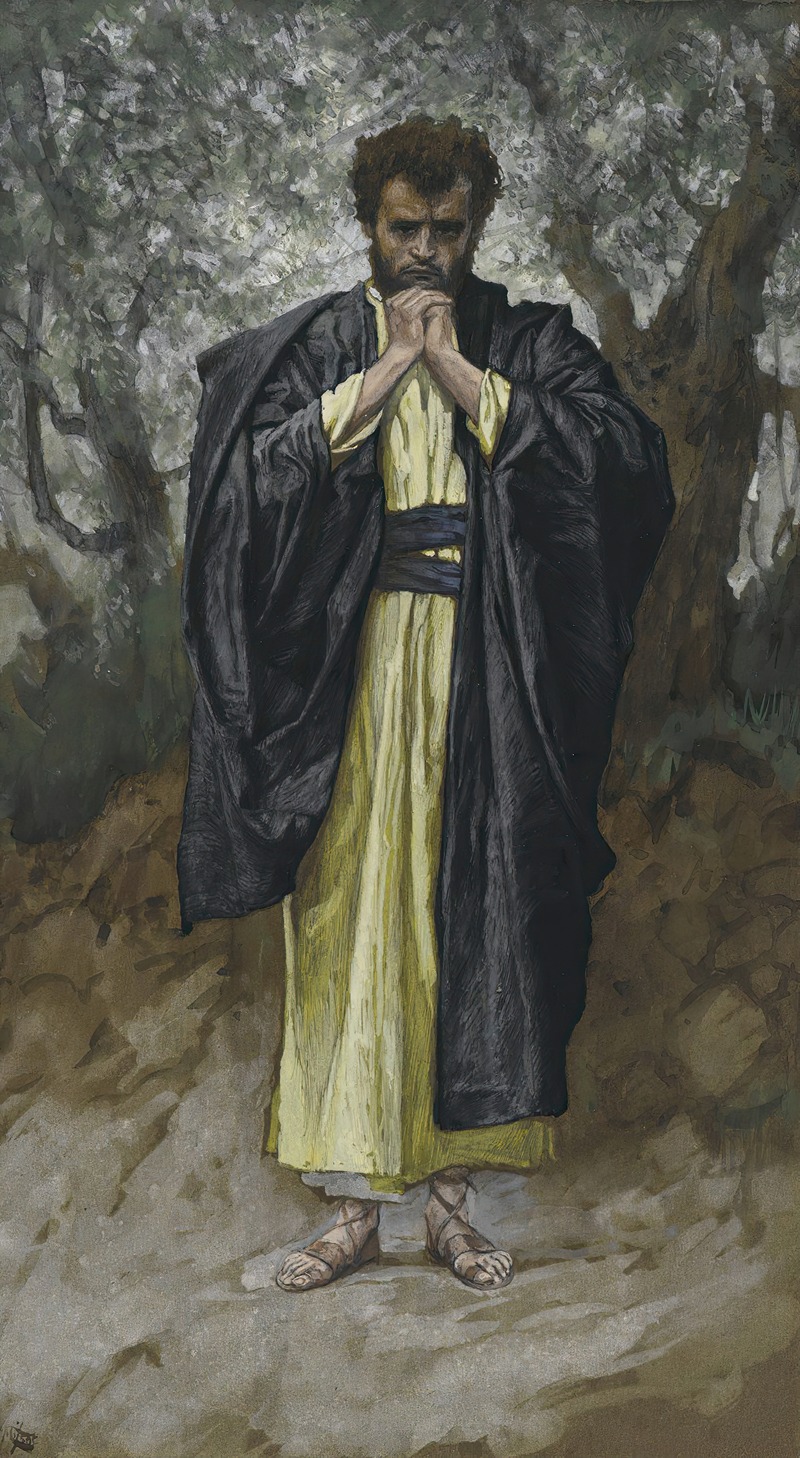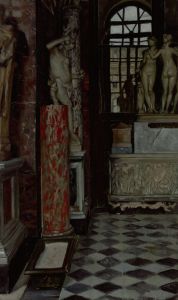
Saint Matthew
A hand-painted replica of James Tissot’s masterpiece Saint Matthew, meticulously crafted by professional artists to capture the true essence of the original. Each piece is created with museum-quality canvas and rare mineral pigments, carefully painted by experienced artists with delicate brushstrokes and rich, layered colors to perfectly recreate the texture of the original artwork. Unlike machine-printed reproductions, this hand-painted version brings the painting to life, infused with the artist’s emotions and skill in every stroke. Whether for personal collection or home decoration, it instantly elevates the artistic atmosphere of any space.
James Tissot, a French painter and illustrator, is known for his detailed and realistic works, often depicting scenes from the Bible. One of his notable works is "Saint Matthew," part of his ambitious series titled "The Life of Christ." This series, created between 1886 and 1894, consists of 350 watercolors that illustrate the New Testament, reflecting Tissot's deep interest in biblical themes and his meticulous approach to historical accuracy.
"Saint Matthew" is one of the many pieces in this series that captures the life and times of Jesus Christ and his apostles. Tissot's depiction of Saint Matthew is consistent with his broader artistic style, characterized by a keen attention to detail and a commitment to authenticity. His works are known for their rich colors, intricate details, and the ability to convey the cultural and historical context of the scenes he portrays.
James Tissot embarked on extensive travels to the Middle East in the late 19th century, which greatly influenced his biblical series. His journey to the Holy Land allowed him to study the landscapes, architecture, and people, which he then incorporated into his artwork to enhance its authenticity. This dedication to realism is evident in "Saint Matthew," where Tissot's portrayal is informed by his observations and studies during his travels.
In "Saint Matthew," Tissot likely presents the apostle in a manner that reflects both his role as a tax collector before following Jesus and his subsequent transformation into one of the four Evangelists. While specific details about the composition and visual elements of "Saint Matthew" are not widely documented, it can be inferred that Tissot's work would include elements typical of his style—such as detailed costumes and settings that reflect the historical period.
Tissot's "The Life of Christ" series, including "Saint Matthew," was well-received for its innovative approach to biblical illustration. The series was exhibited in Paris and London, drawing significant attention and acclaim. Tissot's work offered a fresh perspective on biblical narratives, combining artistic skill with a scholarly approach to the subject matter.
Today, Tissot's "The Life of Christ" series is housed in the Brooklyn Museum in New York, where it continues to be an important part of the museum's collection. The series, including "Saint Matthew," remains a testament to Tissot's dedication to capturing the essence of biblical stories through art. His work not only reflects his personal faith and artistic vision but also contributes to the broader understanding of biblical history and its depiction in art.
Through "Saint Matthew" and the entire series, Tissot's legacy endures as an artist who bridged the gap between art and historical scholarship, offering viewers a window into the past through his detailed and evocative illustrations.











